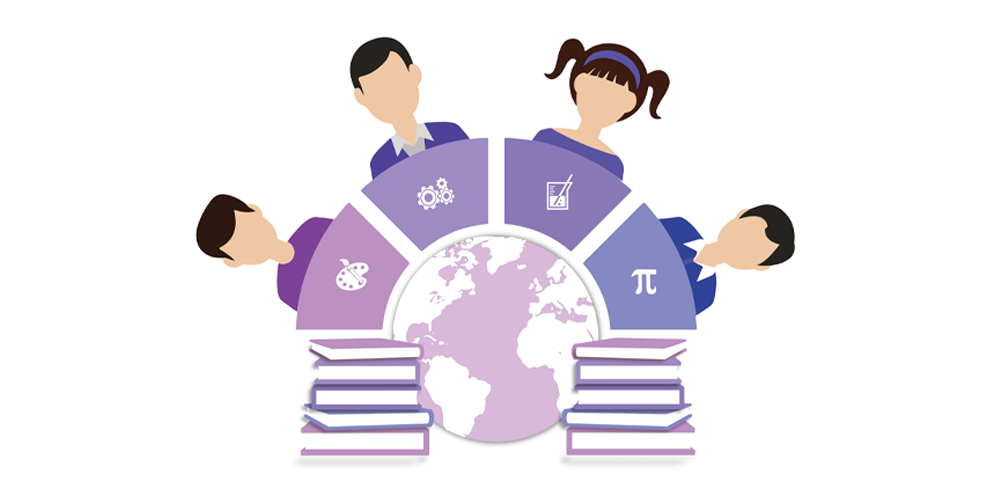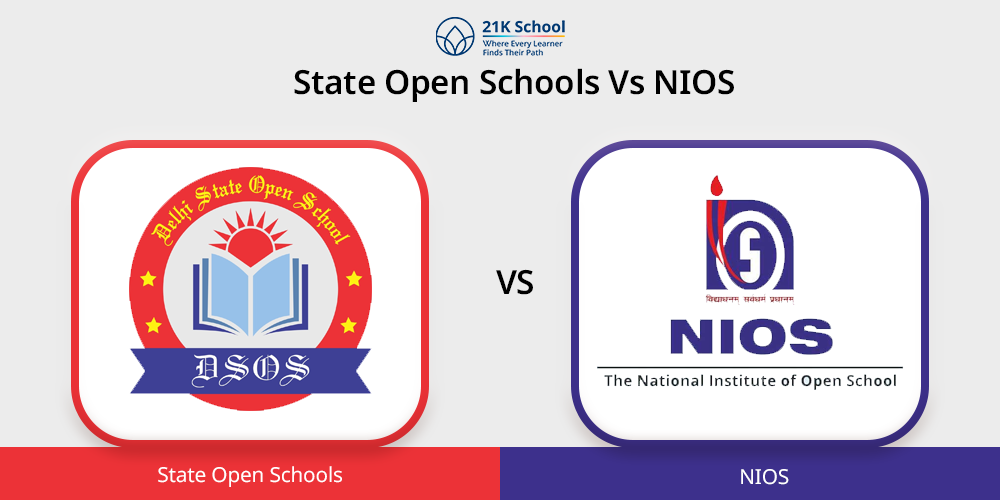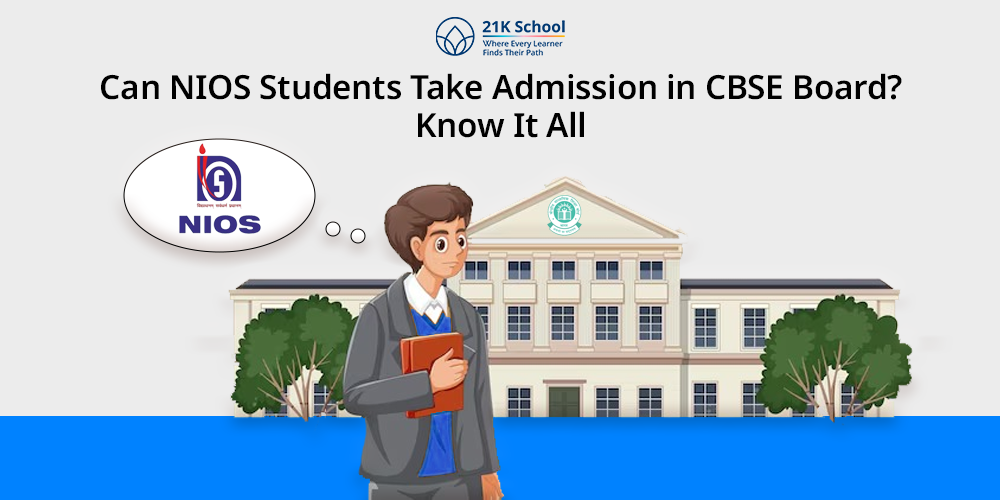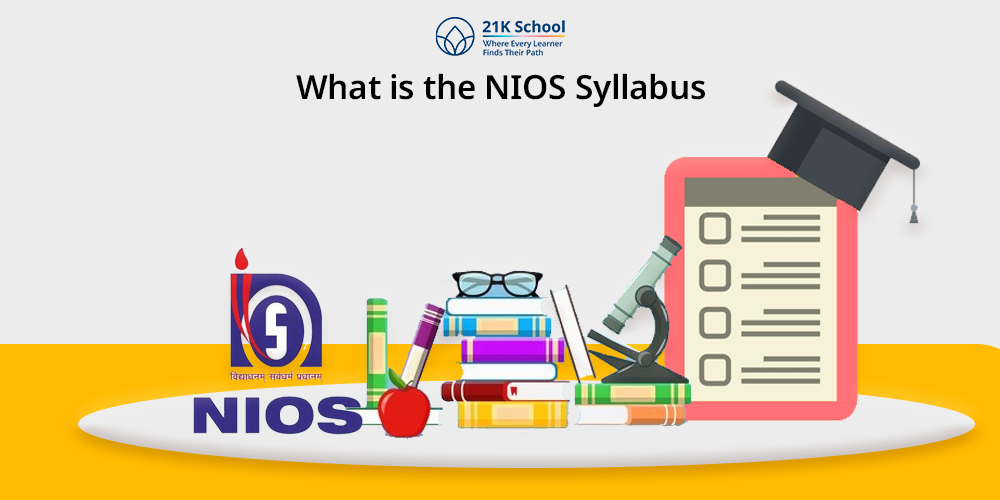
Education is valued in the Indian demographics, it is considered to be one of the wealthiest things a person can get hold of, also believed that it doesn’t come that easily, it requires a lot of patience, acceptance and awareness along with hardwork and intelligence.
Inclusive education has made this education more accessible and acceptable for everyone in this country, by making them a part of society that empowers them, regardless of their social, economical or personal challenges.
It’s a system of education that celebrates the diversity and unique individuality of every learner. Nobody in this system is sidelined or left out of the learning process.
It is important to understand that such environments make a very huge impact as a lot of people are involved in the journey to make it happen, in an educational set-up it is referred as the learning that thrives on collaboration and inclusivity.
Inclusivity is no more just a classroom behaviour rather it’s a societal fabric that contributes to the shared responsibility of making the world a better place for everyone in it.
In this article, we will delve into the fundamentals of inclusive education, explore its guiding principles, highlight its benefits and barriers, and discuss effective strategies to implement inclusivity in classrooms.
Let’s start this journey by actually knowing,
Table of Contents
- What Is Inclusive Education?
- History Of Inclusive Education
- Importance of Inclusive Education
- Characteristics of Inclusive Education
- Guiding Principles of Inclusive Education
- Advantages of Inclusive Education
- Disadvantages to Inclusive Education
- Types of Inclusive Education
- Examples of Inclusive Education
- Difference between Inclusive and Integrated Education
- The Two Pillars of Inclusive Education: Parents and Teachers
- Conclusion
What Is Inclusive Education?
In definition : Inclusive education is an educational approach that ensures all students are involved in the learning process, irrespective of their physical, intellectual, social, emotional, linguistic, or other abilities.
Here in such an environment people have equal rights and access to quality education.
The aim of this approach is to respect diversity and teach young minds the perspective of inclusivity and promote acceptance for diversity — basically to teach them to respect all regardless of everything and anything involved.
History Of Inclusive Education
Inclusive education is a visionary school that looks beyond the traditional environment and promotes success by simply integrating various new methodologies in the mainstream classroom — making this accessible for the students with special needs.
Inclusive education is not a very new concept but rather it has reflected on the gradual shift from its segregation to its integration and to finally in the inclusion.
In the early 20th century students with special needs were often excluded from mainstream education which then overtime became the need to provide this fundamental right to students globally for education.
It’s a very small change, when considered but the impact it creates marks the shift from ignorance to empathy in the world of learning for such people — creating a world where differences make us better and enrich our values with perspective and empathy towards the world.
Inclusive education isn’t just a moral responsibility or a tick-box exercise.
It’s a system guided by principles and real world strategies that contribute to a more equitable society and unlocks human potential beyond challenges and traditional norms. By pushing pre-set boundaries it redefines teaching and learning.
Importance of Inclusive Education
After all, Why Is There a Need for Inclusive Education?
Will you when a diverse Nation and the world is inherently diverse from every understanding and are education systems must reflect on our lifestyle.
When we try to accommodate this diversity in our life in the form of education, training or household understanding we promote inclusivity in every form.
And this prepares young minds for the real world challenges the learners then develops a sense of commitment towards the people and understands the value of social justice and equity fostering empathy equality and reducing prejudice.
There are a lot of reasons why we need inclusive education, some of them to list is :
1. Equity and Social Justice:
Inclusive education bridges the gap between the quality of education received by people all across the globe in different demographics.
It helps in making quality education accessible for marginalized groups, promoting equality and fairness.
2. Global Commitments:
The world needs a change in its approach toward education and International frameworks like the UN Convention on the Rights of Persons with Disabilities (UNCRPD) and Sustainable Development Goal 4 emphasize on inclusive education as a fundamental right, for learners regardless of their identity.
3. Fostering Empathy:
The Inclusive environment teaches learners to value differences personal, profession, economical or even based on opinion.
It is important to value different perspectives to analyse growth and compare the realities of different entities.
4. Improved Outcomes:
With such advanced learning and understanding, it ultimately results in improved outcomes, on personal and even on professional standards.
Studies have shown that inclusive settings enhance academic and social outcomes for all students regardless of their needs.
Characteristics of Inclusive Education
From such a detailed understanding on the guiding principle it is very easy to analyse the characteristics of inclusive education:
Because of course it is teaching dedicated to learners so its a :
1. Child-Centered Approach
Where every decision and strategy is designed in an inclusive environment with the child’s best interests. And thus, it has a :
2. Flexible Curriculum
The curriculum is designed to be adaptable, making sure that it caters to varied learning paces and styles. For such a well designed and strategized curriculum the school needs a,
3. Supportive Teaching Practices
For a classroom to be interactive, it requires a lot of skills and patience.
Teachers are specially trained to use differentiated instruction in the classroom for learners and are always suggested to incorporate assistive technologies to support learners and their diverse needs.
And when everything is set to be in the classroom, what students then actually needs is a
4. Positive Classroom Environment
An environment that promotes healthy competition and fosters respect, empathy and collaboration among the learners boosting the overall environment.
Its very easy to grow in an environment which is healthy and provides you with all positive things around like, confidence, motivation, understanding and a supportive audience and no fear of failure or shame.
Guiding Principles of Inclusive Education
Inclusive education is one of the most effective teaching methods available in the modern classroom environment and thus there are some principles that guide this concept and help them in being universal and follow a standard procedure of implementation.
1. Equity Over Equality:
Inclusive education focuses on making education available for everyone i.e it focuses on equity.
Equity in an educational environment is established by recognizing the unique needs of every learner in the classroom and providing them with appropriate support and resources rather than believing and offering them a one-size-fits-all solution.
2. Diversity as a Strength:
Diversity is often seen as a challenge, the aim of this education system is to change the perspective of people towards the stigma of differences; by promoting differences among learners as assets rather than challenges.
It’s a time consuming process but at the end of the day it will enrich the learning environment for everyone — making a huge difference in the societal perspective.
3. Participation and Accessibility:
Every classroom has a bunch of people who feel left out for any reason it may prevail.
It is very crucial to understand that engagement and active participation in the classroom results in better engagement and knowledge retention.
In an inclusive educational set up, institutions and schools ensure that every student must have access to education and opportunities equally to actively participate in classroom activities, regardless of their abilities and capabilities.
4. Flexibility and Adaptation:
The teaching methodologies in an inclusive environment are designed to suit learners with different styles and needs. Thus, it requires modified or personalised reading materials and assessments.
With such flexibility and adaptation it is easy to implement the teaching methods and also create an interactive and engaging environment for learners.
5. Collaborative Efforts:
Inclusive environment is very similar to a personalised learning environment but carried out with collaborative efforts.
In such a teaching environment educators, students, parents and even the community members are involved and equally responsible for creating a supportive learning ecosystem in the classroom — this results in a successful inclusion of this teaching methodology in the classroom.
Advantages of Inclusive Education
| People | Advantages | How it is beneficial |
| Students | Improved Academic Performance | Diverse teaching methods address various learning styles, enhancing academic outcomes for all. |
| Enhanced Social Skills | Interaction with peers of different abilities fosters empathy, cooperation, and better communication. | |
| Boosted Confidence | Feeling valued and included increases self-esteem and motivation. | |
| Teachers | Professional Growth | Teaching diverse classrooms helps educators develop adaptability and innovative teaching strategies. |
| Enriched Teaching Experience | Inclusive classrooms are dynamic, inspiring creativity and engagement for teachers. | |
| Society | Reduced Discrimination | Inclusion breaks stereotypes and promotes acceptance of diversity. |
| Economic Benefits | A more educated and inclusive workforce boosts economic development and social cohesion. |
Disadvantages to Inclusive Education
There are multiple advantages to inclusive education, though implementing inclusive education faces many challenges:
1. Lack of Awareness:
It would not come to surprise in the world if I say that exclusivity has now been normalised.
People are not aware of the concept of inclusive education, and it is difficult for them to understand its benefits even when the world is fighting for identity and inclusivity.
This lack of awareness among communities and educators leads to resistance in implementation or even results in half- hearted implementation done, just for name sake.
2. Inadequate Training:
Even when the world around us is very advanced and now knows how to be on their toes, for any small or big revelation and learning.
Teachers often lack the training for inclusivity and other modern education methodologies.
This would ultimately help them in managing diverse classrooms effectively, but the resources available are either limited to big institutions or are costlier than the primitive methods.
3. Resource Constraints:
Most of the teachers are not getting proper training also because of the economical constraints, and similarly Insufficient funding for assistive technologies, infrastructure, and support staff limits the scope of inclusive practices. — this could affect both teachers and learners’ growth.
People often tend to resist the change in the initial phase. No big change has ever happened without resistance to it. .
4. Rigid Curricula:
The curriculum available with the students in the traditional classroom follows a very rigid curriculum with time constraints and introducing inclusivity and collaborative learning in that schedule can be difficult and the standard education system doesn’t really allows any such alteration or modification in the curriculum – i.e it leaves little or no room for flexibility.
5. Social Stigma:
Every step towards mankind breaks some stigma existing in this world.
Prejudices and negative attitudes towards disabilities or differences is not a new thing, people with special needs have always been looked down upon in society and this can hinder the successful integration of inclusivity in the usual classroom setup, provoking parents to go against this inclusion.
Types of Inclusive Education
Inclusive education is a very basic concept, when implemented wisely. It’s strategic and well designed.
Each Of the different types of education is designed to cater to the different types of audience and learners catering to their needs while teaching them the value of cultural diversity and acceptance of individuality promoting equity and shared learning.
The different types of inclusive education are :
1. Full Inclusion
In the inclusive model of learning, students with diverse needs are involved and introduced entirely to the mainstream classroom.
As they participate in the learning process, they collaborate and participate in all activities with their peers, they are provided with all required resources and support within the same environment as the general education setting.
2. Partial Inclusion
In the partial inclusion classroom students spend most of their time in mainstream classrooms but alongside they attend special education sessions or may refer to a specifically designed resource, skills or subjects when the support is needed.
3. Social Inclusion
Social inclusion focuses on integrating the learning for special needs socially, ensuring they participate in extracurricular, school events and social interactions.
In this scenario it is not compulsory that the academic learnings will take place together, they may have separate settings but the interaction for both the settings will be planned and together.
4. Reverse Inclusion
Reverse inclusion, is a classroom and it typically helps developing students by bringing them into specialized classrooms or providing them specially designed programs to learn with peers who have disabilities or special needs.
This approach where interaction between both the group of learners is promoted, it helps both the developing students and the special needs students to understand each other fostering empathy and acceptance.
5. Inclusive Early Childhood Education
Inclusive education is equally important and beneficial when it comes to early schooling, introducing inclusive education practice in early childhood programs ensures that children of all abilities learn and grow together.
When introduced early it slowly becomes natural to them, acceptance to things happening at a very early age — i.e the formative years.
Examples of Inclusive Education
The Finnish education system is one of the best examples of inclusive education since the country has paid a lot of attention in its learning system supporting equity in learning among students.
The schools in Finland provide education inclusive to all children with or without disability or learning difficulties seeing them in the main classrooms.
Special needs are addressed by teachers who develop learning plans for each learner, incorporate use of special tools and the help of special education teachers.
For example, if a child with autism needs it, he/she may be provided with aids, like a fidget or may be given modified work, yet engaging in learning in a typical manner.
Now when we have discussed cross border examples, we have a more interesting example to consider.
In a closer instance there is 21K School, which is a global online school and is also a good example for inclusion.
The School uses technology to offer this environment in which students with different learning needs can learn comfortably.
The learning model of the school is designed for handling children with disabilities, the gifted, or children who need to attend school outside conventional days. The online lessons, quizzes, and real-time conversations of teachers, as well as the immediate interaction offer a good experience in learning, to any learner with an opportunity to have them explained in a way understandable for them despite their difficulties.
In both cases, the idea of inclusive education successfully points at the possibilities of providing equity-based learning contexts for students in the light of regular classroom lessons or in the context of distance learning.
Both integrated and inclusive education are two models of functioning in educational settings with the goal of offering equal chances to children with different abilities, origins, and learning needs. While they share some similarities, there are key differences between the two:
Difference between Inclusive and Integrated Education
Definition:
If we go by the definition,
Inclusive education is a process of learning in which disabled and other disadvantaged children join mainstream education and take advantage of necessary support, just as any developing student would.
On the other hand, integrated education is where students with learning disabilities or needs in general are placed in a class, with all other developing students and the attention provided to them to meet their needs may not be appropriate.
Partially inclusive classrooms are examples of such education.
Support for students:
In inclusive education, the learner with a special or disability needs is provided for with support, academic adjustments and accommodations depending on specific needs they may have in an ordinary school.
Integrated education also means that students with special needs are not always allocated the required support or the means that would enable them to be active in the class adequately.
Mainstream versus specialized environment:
The concept of Inclusive education seeks to promote the idea that the student with one or more disabilities will attend the regular classes with their nondisabled peers.
Integrated education does not necessarily mean that the learners will mix fully because learners with certain disabilities will have special classes or are withdrawn at some point from the regular classroom.
Philosophy:
– There are two fundamental premises for the concept of inclusion; every child has a right to education and that students must be allowed to learn with peers irrespective of their capacity for learning or disability.
Even fully integrated students may be taught this way because the original grant aimed at effectively removing students with special needs or disabilities from mainstream schooling and only brought into a classroom setting when and if it is thought to be helpful or practical.
All in all, inclusive education is about establishing an improved environment that supports the learning needs of children in regular school, integrated education is all about placing special needs kids or kids with disabilities in normal school environments with some support.
They are both oriented to increasing access to education for students belonging to subgroups, but the difference is in the details of their carrying out and the amount of assistance offered.
The Two Pillars of Inclusive Education: Parents and Teachers
1. Role of Parents in Inclusive Education
Inclusivity doesn’t come that easily to the world of education, it requires a lot of attention and hard work from everyone involved.
For successful implementation and good result, parents play an important role in shaping the way for inclusive education. There are number of reason they are important and some of them are:
Advocates for Their Child
Parents definitely play an important role in advocating their child’s future needs and they ensure the availability of all the required resources and appropriate support in an inclusive environment.
They collaborate with educators and participate in every individualized education plan meeting, ensuring that they voice their child’s feelings and always stand for their best interest when making a decision.
Active Participants in Learning
When a child is going through his academic drift, parents are an active participant in the process of learning, from encouraging them to participate in scholastic activities or to helping them finish their assignments and projects.
They guide their kids to maintain an open communication channel with teachers and ensure that they grow in a supportive environment. This participation from parents helps learners in growing socially
Emotional Support Providers
When overwhelmed by the education process, in an inclusive environment. Parents provide real support to learners and help them build their confidence and resilience.
The understanding and support helps learners in understanding different perspectives and at the same time embrace and respect it, and it also teaches learners to adapt to the changes happening in the inclusive settings.
Bridging Home and School
Parents bridge the gap between the school environment and home. They share responsibility with teachers in sharing valuable insights and life lessons to children as per their needs, strengths and preference.
The partnership between parents and the educators ensures more strategically tailored learning experiences i.e effective and efficient.
2. Role of Teachers in Inclusive Education
Facilitators of Learning
Teachers are the building block of the inclusive education system, they accommodate diverse learning experiences in forms of lessons and plan out the classroom activities for learners.
Learners use differentiated instruction, flexible teaching methods and assistive technologies to ensure maximum participation in the classroom. Teachers help learners grow academically keeping track of their improvement.
Builders of an Inclusive Culture
Teachers, when in an inclusive classroom, try to maintain a positive and accepting environment where diversity is celebrated and accepted by everyone.
With such acceptance students learn empathy, cooperation and collaboration by being a part of it thus, normalising the concept of special needs and diversity.
This inclusive environment helps students in developing a sense of mutual respect and understanding among peers.
Continuous Learners
It’s nearly impossible to stop learning, it’s a journey that never ends rather just gets recognition in its way and slows down with achievements — we call it educational milestones.
Even the educators in an inclusive classroom must continuously keep updating their skills and knowledge, one size never fits all.
This can be done with the help of training sessions and workshops where they learn new strategies and skills for teaching, this ensures an easy and well equipped flow of learning for all students.
Collaborators with Stakeholders
Teachers are the pillar of communication between the authority and students or parents.
Inorder to make voices recognised by the higher stakeholders of the institutions it is equally important for teachers to create a positive environment for a holistic support system.
Effective collaboration between parents, teachers, special educators and counselors help childrens in getting the necessary resources and guidance.
Conclusion
Inclusivity is not just a concept. It’s a practice that can transform lives and societies.
It helps in creating a positive environment for learners and promotes understanding and acceptance. It is more about celebrating diversity than sticking to the stigma of sharing equity and opportunities with less deserved.
As we promote inclusivity, we pave the way for a brighter and a healthier society in all aspects. Implementation of inclusive practices requires collaborative efforts from all, but the reward is for generations.
Societal harmony can never be achieved with inclusivity, cultural acceptance, enhanced learning, empathy and tolerance make it well worth the effort.



